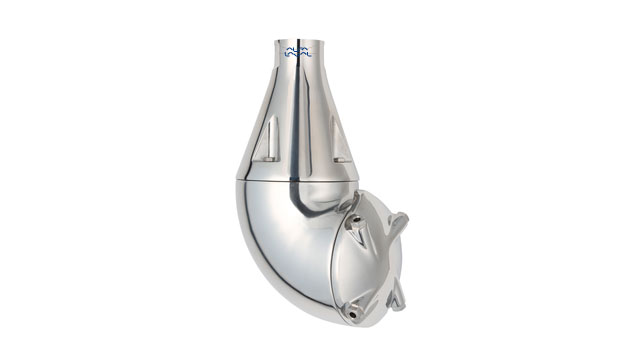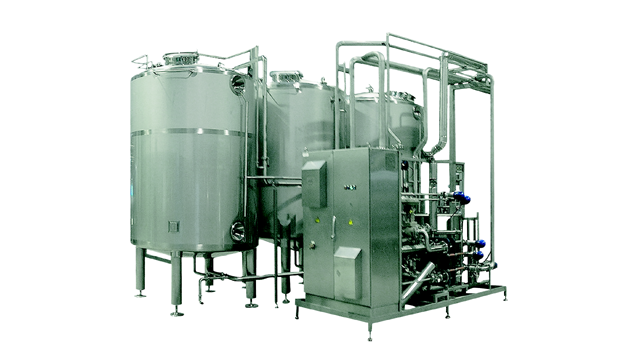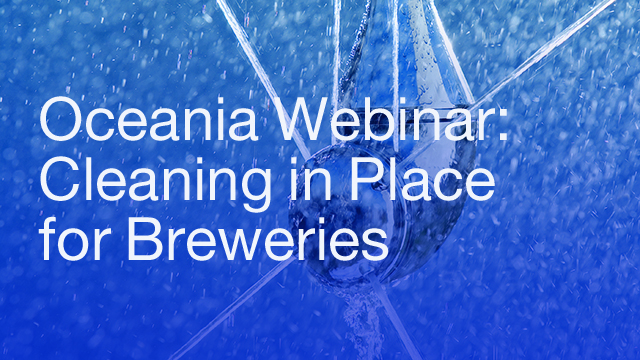5 top tips for brewers to improve tank cleaning with CIP
Hygiene is always top priority for brewers but especially following the COVID crisis. The most common method of achieving the cleaning of tanks, pipes and other brewery equipment is via Cleaning in Place (CIP).
DATE 2023-11-28We asked our experts about the specific cleaning needs of brewers, and what to look out for when investing in new equipment.
Why do craft breweries need professional-grade cleaning machines?
When you’re just starting up, cleaning operations are relatively simple. But the mandate to keep your tanks and equipment in top shape can quickly grow in complexity, cost and time. For example, you might be experimenting with different yeast strains and other organic ingredients and need frequent cleaning, even between batches. Commercial-grade cleaning is recommended in the brewhouse, wort lines, fermentation and lagering tanks, filtration and filling lines as well as yeast propagation and storage vessels.
The correct equipment selection of the CIP system, tank cleaning heads, valves and pumps along with an optimised procedure, type of chemicals and frequency can have a huge impact on how effectively and efficiently the brewery is cleaned. The goal is not only to thoroughly clean the equipment but achieve the highest hygiene standards with the minimum amount of chemicals, water and energy in the least amount of cleaning time.
What is Cleaning in Place and how does it work?
CIP is often an automated cleaning process that uses a mix of chemicals, disinfectant, water, heat, time and action (wetting, turbulence and impact) to remove residual yeast, hops, other organic and inorganic residues and any potential spores or bacteria from the complete brewery system without the need of dismantling the equipment or manual cleaning.
The benefits of implementing newer and more efficient CIP technologies is that the brewery will ensure to have properly cleaned and sanitised the complete plant after each CIP. This results in reduced time of CIP, product losses, chemical and water usage as well as increased uptime to brew more batches.
What are some of the new technologies for tank cleaning?
Tank cleaning machines are one of the most used cleaning solutions for brewers. The Alfa Laval range of cleaning heads, in particular, our rotary spray and rotary jet heads make light work of cleaning fermentation and bright beer tanks.
The traditional static spray ball relies on wetting and cascading flow of the cleaning solution on the walls of the tank and internals with limited coverage, high water/chemical consumption, low impact and long cleaning time. Rotary spray balls instead use fans of water/chemical covering all areas of the tank where static spray balls cannot reach with medium water/chemical consumption and medium impact. Switching to rotary spray heads typically reduces cleaning time by one-third of what it would take with a static spray ball.
Rotary jet heads are ideal to clean stubborn yeast rings (Krausen) in the fermentation tanks, and perform significantly better than static spray head in terms of cost, water and CIP chemicals use.
Rotary jet heads clean using 360-degree jets hitting all areas and internals within the tank with low water/chemical consumption, high impact and cleaning time typically reduced less than half of what it would take with a static spray ball. Using the Alfa Laval Rotary Jet Heads the tanks can also be fitted with our Rotacheck validation instrument which can provide peace of mind to the brewer that the CIP has been effectively completed.
The other trend in tank cleaning is burst cleaning, where the caustic is sprayed on first, then rinsed with water. When the caustic is running clear, the tank is clean and solids have been removed. This method reduces cleaning time and with that production downtime significantly. The Alfa Laval TG40 Burst has a special nozzle to fully wet the yeast ring in just 1 – 2 minutes.
What do commercial breweries use?
For brewers looking for a commercial-grade, high performing solution, the Alfa Laval CIP Station is ideal in conjunction with the appropriate Alfa Laval tank cleaning heads, valves and pumps. A typical cleaning procedure would comprise of an initial water rinse, caustic wash, intermediate water rinse, acid clean, a final water rinse followed by a hot water disinfection or sanitiser rinse. During the whole cleaning cycle, the temperature, flow and detergent concentration in the CIP return line are automatically controlled to ensure optimal consumption and recovery of cleaning chemicals.
The CIP station is skid mounted and comes with a control panel and PLC that monitors the operation of the plant and controls the procedures, process data, set points, tank volumes and alarms. The system automatically makes-up the cleaning solutions to be used at the programmed concentrations, sequence and timing of the CIP procedure.
Once ready the cleaning solution is pumped through a heat exchanger on the module to achieve the desired cleaning temperature and then through all the pipes, tanks and equipment in the brewery to be cleaned before returning back to the circulation tank on the CIP module.
Piping design is another important factor when looking at improving cleanability of a brewery. Layout and piping design should be done in such a way as to avoid dead legs in piping branches and utilizing sanitary Mixproof valves and hygienic pumps where possible. This will ensure that the whole system is effectively cleaned, as dead legs and crevices are difficult for a CIP to properly access and clean with the appropriate velocity.
What does the COVID pandemic mean for brewers?
For many craft brewers and brewpubs the COVID situation meant keeping beer in storage for longer than usual due to the closure and restricted number of patrons allowed at bars, restaurants and clubs. This requires extra care to avoid product spoilage and ensure longer shelf life.
Microbiological spoilage occurs when residues remain in place. Your CIP needs to use the correct combination of Temperature, Action, Chemicals, and Time (TACT) to prevent product contamination. You need to have confidence that each cleaning cycle removes 100% of protein, yeast or bacteria, even in hard to reach places such as the tank tops and the cleaning machine itself.
Consumers want to know that their beverage is safe to consume and produced in a meticulously cleaned facility. So cleaning in place is also about confidence and getting the business humming again after a challenging period of time for the industry.
Highlighted products
Alfa Laval TJ Rotary Jet Heads
Alfa Laval’s range of Rotary Jet Head tank-cleaning devices provide exceptional cleanability, better end-product quality, greater overall output and up to 70% reduction in operating costs. Avoid contamination with a 360° repeatable cleaning pattern and reduce water and chemicals requirements.

Alfa Laval CIP Station
Maintaining the highest standards of hygiene and cleanliness of brewing equipment matters more than ever. Alfa Laval CIP station is a modularised skid mounted plug-in unit for automated Cleaning-in-Place of brewery process installations such as piping systems, tanks, filling machines, heat exchangers.



